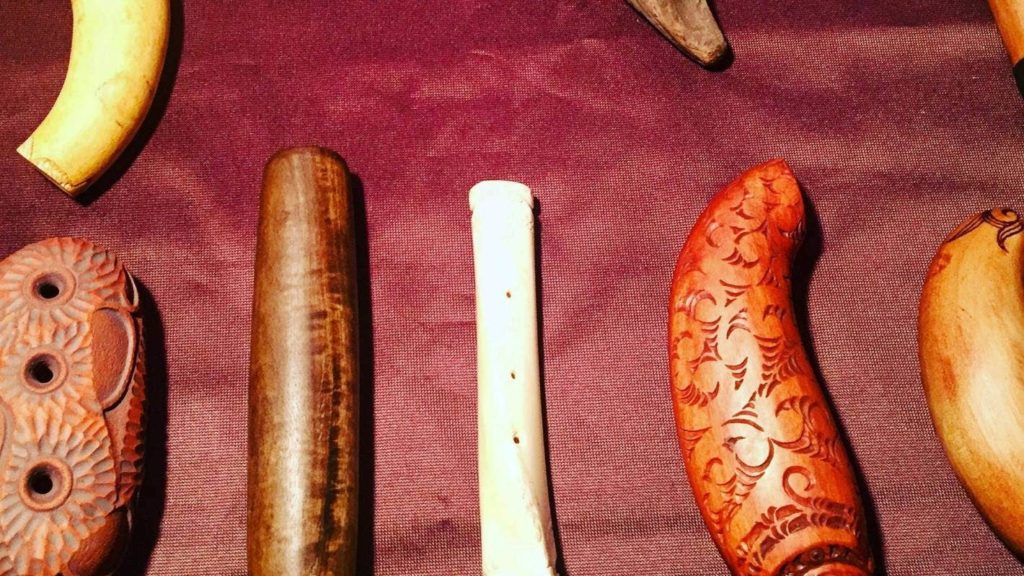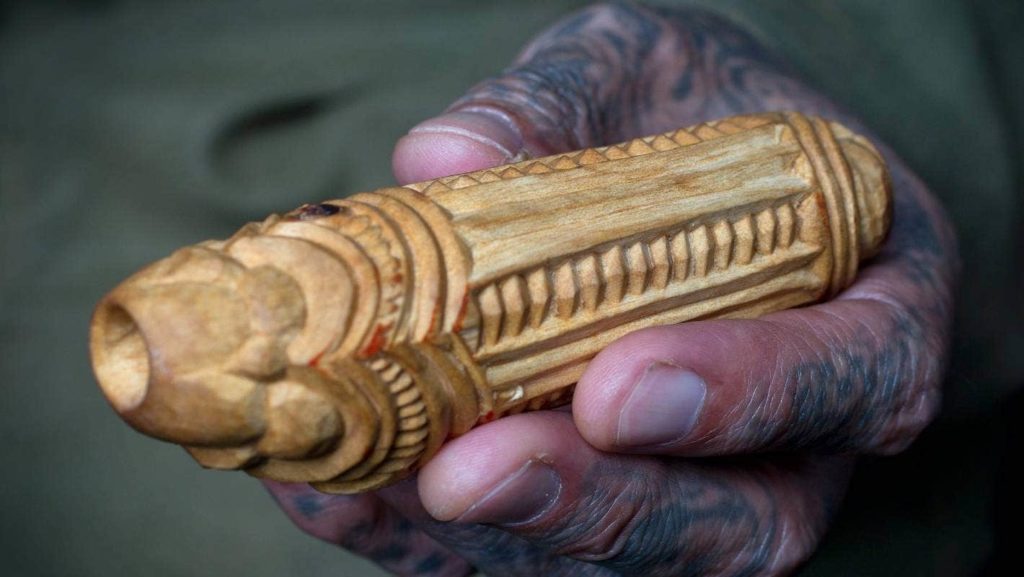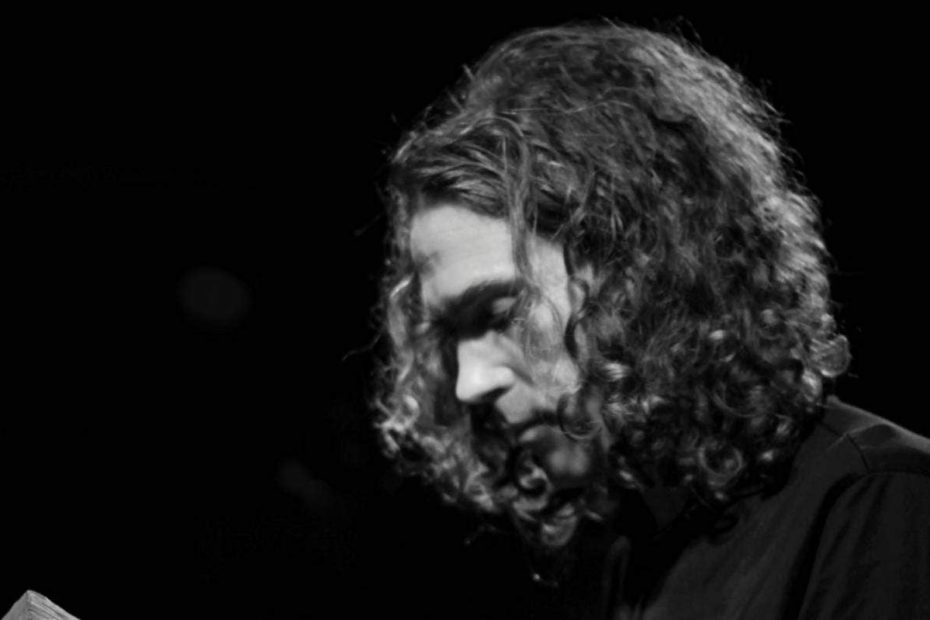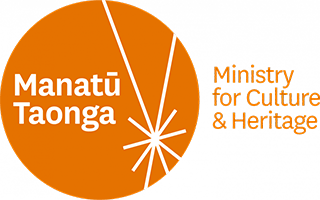
Rob Thorne would visit schools some 15 years ago with taonga puoro – traditional Maori instruments – and the children would be amazed. It made him wonder why he hadn’t learned about instruments such as putorino, putatara, purerehua, pahu pounamu or koauau when he too was a kid.
“I was surprised when my own interest in taonga puoro was awakened in the late 1990 that I hadn’t learned something to do with my own culture in school,” he says. “Nowadays, taonga puoro is part of the curriculum of a lot of schools. It’s popular media that is helping to nurture it and bring it through. When i first started going into primary schools in 2001, I would take my instruments with me and the kids didn’t know what they were. Nowadays, kids will say to me ‘my dad or mum has one of those’. The knowledge of taonga puoro is very much a part of New Zealand culture and music now. It’s fantastic.”
Those schoolchildren aren’t the only ones impressed by Thorne’s command of taonga puoro – continents away, someone was listening and declaring in various interviews how highly he rated Thorne’s work. That someone was Berlin-based Kiwi electronica artist Olly Perryman, aka Fis.

Once Thorne became aware of Fis’ support, he got in touch. “Someone lauding my work as wonderful, is someone who I want to work with,” Thorne says. “I don’t usually think ‘what do they do’, I think ‘wow, I want to work with this person not the art they do’. I didn’t really know what Olly did until I said ‘hey let’s do some stuff’.
“That’s how it developed. I know it’s a very esoteric idea but the collaboration already existed in the future and all that needed to be done was to tie up loose ends.”
The pair didn’t actually meet until February 2016, when Fis’s agent booked them to appear at electronica festival CTM in Berlin.

“Olly had already talked about wanting to see me on stage playing taonga puoro,” Thorne says. “The first time we met was when he picked me up at Berlin Airport. Here was a very tall big dude and I am quite small so it was quite a surprise. We spent two weeks at an artist’s residence facility and did a bunch of compositions for the show.
“The great thing about that was that Olly wanted to use my sounds to create other sounds, which I would then collaborate with.
“We recorded over three days at the Red Bull studio the week before the show. We recorded the scripted composition that we had prepared for the show plus I recorded a lot of improvised pieces with as many instruments as possible for a solo album. That’s the music you hear on Clear Stones [the album which resulted]. Olly took those recordings and spent the best part of a year working with them.
“The process worked really well. We were both thinking on our feet, which is a perfect recipe for improvised collaboration. It’s just amazing what Olly has done. The more I am listen to the album the more I am convinced that this is so cutting edge. He’s a freakin’ genius.”
A trend with traditional Maori music has been allowing these instruments to stand on their own.
The recorded history of traditional Maori music has been very much linked to waiata and it’s various styles whether it be lullaby, lament or love song: the song was king.
That’s been slowly changing. Taonga puoro were used in the soundtracks to Once Were Warriors and Whale Rider before much-heralded Maori composer Hirini Melbourne and ethno-musicologist Richard Nunns released their ground-breaking 1994 album Te Ku Whe. For the first time traditional Maori instruments were given a musical context devoid of words that awakened the possibilities of these instruments in a contemporary setting.
Since then New Zealand composers Gillian Whitehead and Martin Lodge have made notable contributions to the development of taonga puoro in broader contexts while Nunns, Horomona Hora and more recently Thorne, who initially just wanted to be an alternative rock star until he heard Te Ku Whe, have expanded on the unique sounds and possibilities of these instruments in both solo and collaborative works.
Thorne’s rite of passage with his debut album Whaia Te Maramatanga blossomed with Pursue Enlightenment Suite and Whakawhiti and has moved into another stratosphere on his new album.
“Modern taonga puoro is collaborative art encompassed by Richard and Hirini,” he says. “Collaborating expands the understanding of the art form and its audience. It brings people into contact with a culture and musical tradition that they might not otherwise be exposed to. I see it as a response art. If someone gives me something, I respond to it. That was one of the things I was trying to achieve with Whaia Te Maramatanga. I wanted to pull it out of that safe of zone of collaboration and, I don’t mean this in a negative way, but, at the end of the day, people didn’t matter. I tend to be driven for the sake of the art. If you listen to the audience and try to find a sense of direction or approval or appeal from them, I’d have given up years ago.”
Read the full article here.


